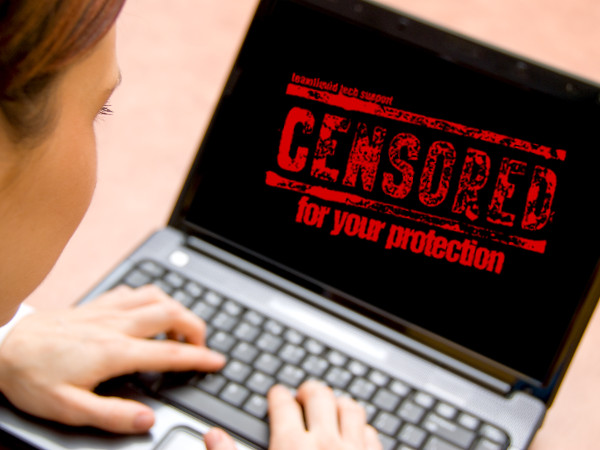Nine Years In, Still Blocking Porn One Site at a Time
 JAKARTA – A little less than nine years ago, the Indonesian Dewan Perwakilan Rakyat (“People’s Representative Council”) passed a controversial piece of legislation called the Bill on Pornography, a somewhat watered-down and re-branded version of a previous proposal called the “Anti-Pornography and Porno-Action (“Pornoaksi”) Bill.
JAKARTA – A little less than nine years ago, the Indonesian Dewan Perwakilan Rakyat (“People’s Representative Council”) passed a controversial piece of legislation called the Bill on Pornography, a somewhat watered-down and re-branded version of a previous proposal called the “Anti-Pornography and Porno-Action (“Pornoaksi”) Bill.
The wide-ranging act covers an immense amount of porn-related material and territory — as it must, considering the scope of the legal definition of pornography the bill contains.
Article 1 of the law defines pornography as “pictures, sketches, illustrations, photos, writing, voice, sound, moving pictures, animation, cartoons, conversations, movements of the body, or other forms through a variety of communication media and/or performances in public which contain obscenity or sexual exploitation which violates the moral norms in society.”
As part of its effort to eradicate porn from Indonesian society, the government tasked its Communications and Information Ministry (CIM) with identifying and blocking all pornographic websites from the Indonesian internet.
Since even the most conservative estimates place the number of porn sites in existence at several million (more sensationalistic guesswork places the number at 42 million), the CIM has been given a seriously daunting task. Making it even more difficult is the fact the CIM has spent the past nine years identifying and blocking sites manually, one venue at a time.
Along the way, the CIM has managed to block only around 800,000 porn sites, a figure its leadership concedes is merely a drop in the sprawling filth-bucket of the global internet.
“We have told the minister that we want to erase all pornographic content,” said Samuel Pangerapan, Director General of Information Application at the CIM. “Even though we can’t target them all, we want to (block) the majority. Maybe next year we’ll have the tool to clean up that contents, so that (blocking) is more effective.”
They’re nine years into this task and now they’re “hoping” to have a tool next year that might speed things up? For a need pegged as urgently necessary by the central government, it sure doesn’t seem like Pangerapan and his colleagues at the CIM are getting a whole lot of support for their Herculean mission.
Pangerapan does, at least, have a wish list of features and functions for the porn-blocking aid he hopes his employees will soon have at their disposal.
“Yes, there will be an automatic monitoring system,” Pangerapan said. “Right now, actual people are doing the work. We feel sorry for them that they are forced to look at stuff like that every day.”
Despite his high hopes for a technological assist to his staff’s arduous porn-blocking efforts, Pangerapan seems resigned to the virtual impossibility of a total porn block, be it next year or further in the future.
“The internet is open; every day there’s new pornographic websites or the existing ones get modified,” Pangerapan correctly observed. “That means the public must be able to censor themselves.”
When it comes to getting Indonesians to censor themselves, I suppose you could say the Indonesian government has, through the provisions of the Bill on Pornography, given its people plenty of incentive to avoid consuming, producing or distributing pornography.
The language of the law, even once translated and interpreted by an English-speaking legal scholar, makes it somewhat difficult to parse which activities result in what levels of punishment, but this much is clear: The punishment for any sort of involvement in porn, from producing or performing in it to merely distributing or watching it, is potentially severe.
Under Article 29 of the law, producing, making, importing, exporting, buying and/or selling pornography carries punishments of six months to 12 years in prison, along with a fine of somewhere between 25 million Indonesian Rupiah (around U.S. $1,870) and Rp 6 billion ($449,500).
The maximum sentence for “funding or facilitating pornographic activities” is 15 years, along with fines ranging from Rp 1 billion (just under U.S. $75,000) to 7.5 billion Rp (around $561,000). Modeling and performing carry stiff penalties, as well, with sentences ranging from 18 months to seven years, along with fines starting at 150 million Rp (U.S. $11,200) and top out at 750 million Rp ($56,180).
Image © Yanik Chauvin.
One Comment
Leave a Reply
You must be logged in to post a comment.














They do that here in Thailand too. It’s very common in many parts of Asia.